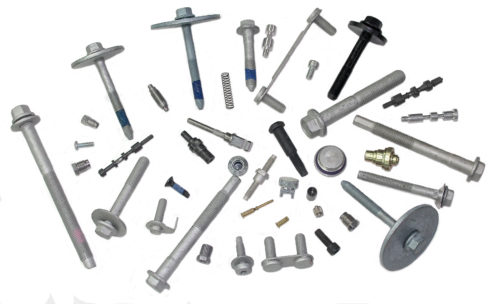Fasteners may be small, but they play a crucial role in ensuring the safety and productivity of any equipment or structure. A failure in one small part can lead to catastrophic consequences. Quality inspection is a must for every fastener, and in this blog post, we will discuss why it is important to perform a quality inspection, the difference between inspecting and testing, and the benefits of conducting inspections regularly.

Why is Quality Inspection Necessary?
Fasteners are used in a wide range of applications, from aerospace to automotive to construction and more. The quality of fasteners directly impacts the reliability and safety of the equipment or structure it’s used in. Any slight discrepancy in the size, shape or material composition of a fastener can lead to a complete failure of the equipment, resulting in downtime and accidents. Inspection ensures that every fastener is of the highest quality, adhering to industry standards and specifications, and not compromised.
The Difference Between Inspection and Testing:
Inspection involves visually verifying the accuracy of dimensions, materials and other characteristics of components or systems to ensure they meet specific standards. Inspection can be done visually, automated or with measurement tools.
Testing is conducted to check that those components or systems are functioning correctly with respect to their intended purpose and specifications. Testing may involve both destructive and nondestructive methods such as vibration analysis, electrical continuity test and load testing.
Benefits of Regular Inspections:
Conducting regular quality inspections has many benefits, including reducing the risk of equipment failure and increasing the overall safety of the equipment or structure. It also ensures that fasteners meet industry standards and specifications, reducing the risk of costly recalls and warranty claims. Regular inspections can also improve productivity, as equipment downtime can be minimized due to equipment or structure failures. The final step of this critical process is certification and documentation. The certificate indicates that the fasteners meet the required specifications, and the documentation ensures traceability and verifies authenticity.
Conclusion:
Quality inspections ensure that the fasteners meet industry standards. Inspection verifies the accuracy of dimensions, materials and other characteristics, while testing checks to verify components are functioning correctly and to their intended specifications. The benefits of conducting regular inspections are many, including reducing the risk of equipment failure, increasing overall safety, and improving productivity. As a quality assurance manager or quality engineer, it is important to keep these factors in mind to ensure that every fastener used has undergone a thorough quality inspection.